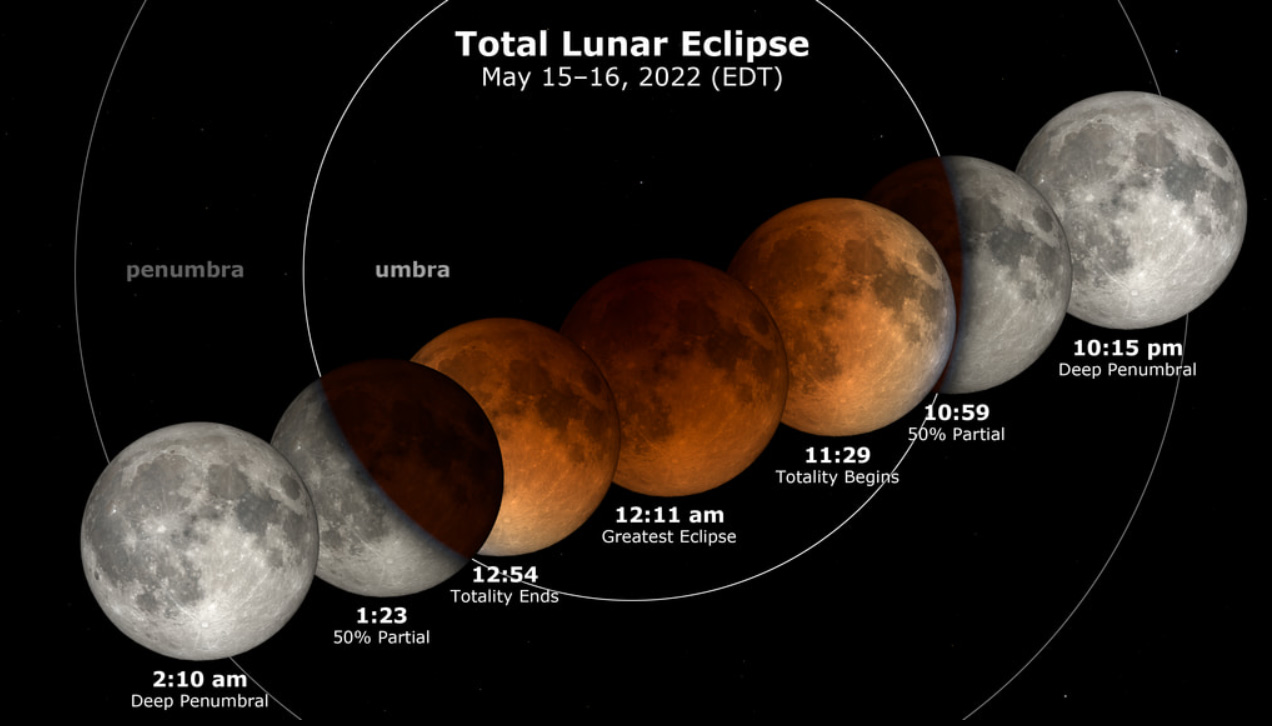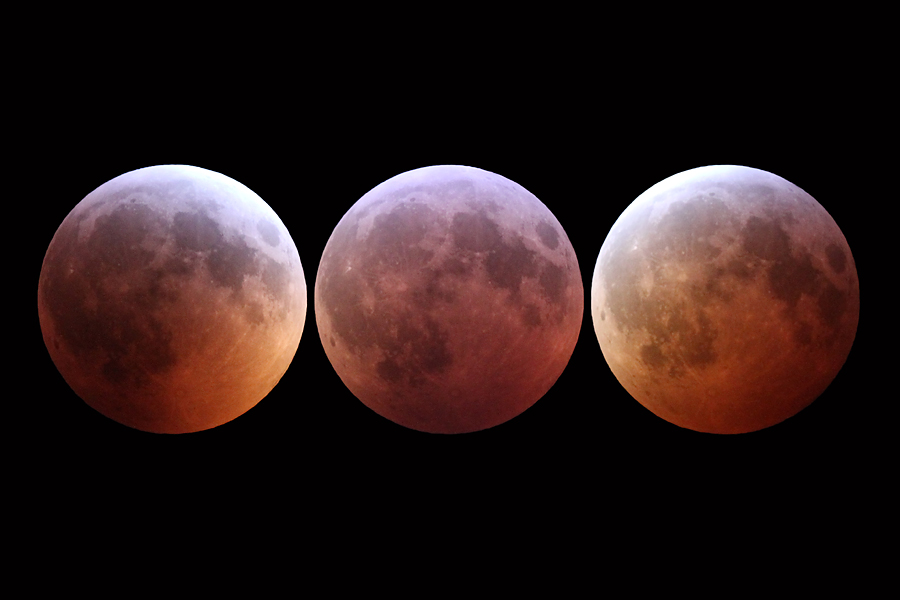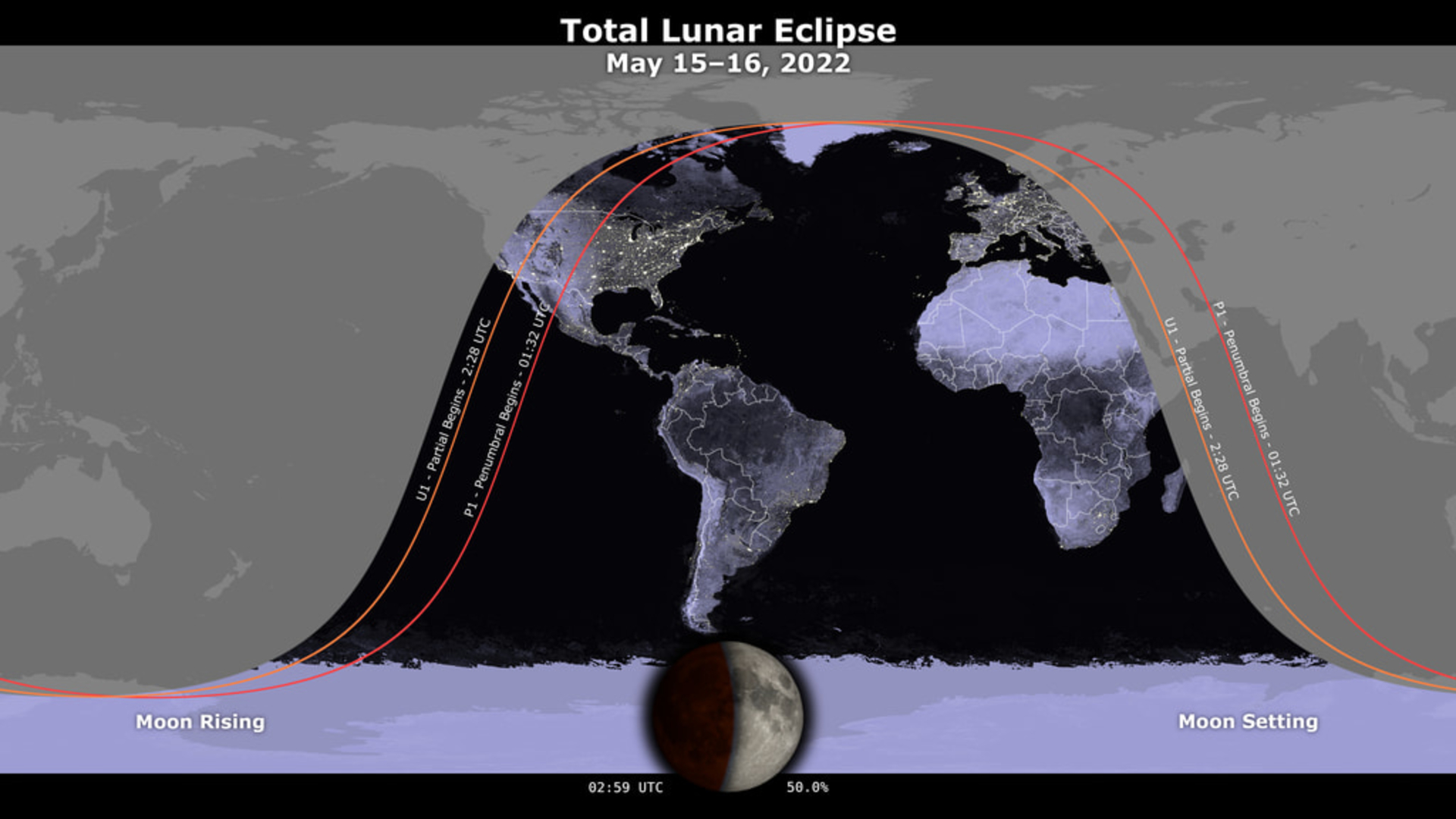What time is the Super Flower Blood Moon lunar eclipse?
Here are the critical times to see the Super Flower Blood Moon eclipse on May 15 and May 16, 2022.
Editor's note: The total phase of the Super Flower Blood Moon lunar eclipse has ended. You can read our wrap story on the first total lunar eclipse of 2022.
A Blood Moon total lunar eclipse will occur this weekend, and here's when to watch it.
The sun, moon and Earth will align Sunday night for a total lunar eclipse on May 15, which occurs when the Earth moves into place between the sun and the full moon. As a result, the Earth casts a giant shadow across the lunar surface, giving the moon a striking reddish hue — which is why lunar eclipses are also referred to as blood moons.

Looking for a telescope for the lunar eclipse? We recommend the Celestron Astro Fi 102 as the top pick in our best beginner's telescope guide.
Sunday's full moon is also considered a supermoon, meaning it looks bigger and brighter than usual because it's at the closest point to Earth in its orbit, also known as perigee.
The total lunar eclipse will be visible from portions of the Americas, Antarctica, Europe, Africa and the east Pacific. Meanwhile, a penumbral eclipse, where the outer part of Earth's shadow blankets the moon, will be visible in New Zealand, eastern Europe and the Middle East.
Related: How to watch the Super Flower Blood Moon lunar eclipse online
If you're looking to photograph the moon, check out our best cameras for astrophotography and best lenses for astrophotography. Read our guides on how to photograph a lunar eclipse, as well as how to photograph the moon with a camera for some helpful tips to plan out your lunar photo session.
Get the Space.com Newsletter
Breaking space news, the latest updates on rocket launches, skywatching events and more!


If you take a photo of the 2021 total lunar eclipse let us know! You can send images and comments to spacephotos@space.com.
Depending on your location, a partial lunar eclipse begins May 15 at 10:28 p.m. EDT (0228 GMT on May 16). The Blood Moon will reach its peak at 12:11 a.m. EDT (0411 GMT) on May 16 before the lunar eclipse ends at 1:55 a.m. EDT (0555 GMT). The penumbral moon phase of the eclipse will begin about an hour earlier and end about an hour after the partial eclipse, according to TimeandDate.com.
Viewers lucky enough to be in the path of the lunar eclipse will have to get outside early to witness the event. There will also be some livestreams available on YouTube from NASA Science Live, Slooh and TimeandDate.com.
Related: The stages of the Super Flower Blood Moon of 2022 explained

NASA's livestream starts at 9:32 p.m. on May 15 (0132 GMT May 16). It will include a discussion on eclipses, moon science and the agency's moon-landing Artemis program. Slooh, an astronomy learning website, will begin their webcast on May 15 at 9:30 p.m. EDT (May 16 0130 GMT). TimeandDate plans to broadcast the entire lunar eclipse, weather permitting, starting at 10 p.m. EDT May 15 (0200 GMT May 16).
This will be the first of two lunar eclipses in 2022. The next one will take place on Nov. 8, 2022 and will be visible at least partially from Asia, Australia, North America, parts of northern and eastern Europe, the Arctic and most of South America, according to TimeandDate.com.
Editor's Note: If you snap an amazing lunar eclipse photo and would like to share it with Space.com's readers, send your photo(s), comments, and your name and location to spacephotos@space.com.
Follow Samantha Mathewson @Sam_Ashley13. Follow us on Twitter @Spacedotcom and on Facebook.
Join our Space Forums to keep talking space on the latest missions, night sky and more! And if you have a news tip, correction or comment, let us know at: community@space.com.

Samantha Mathewson joined Space.com as an intern in the summer of 2016. She received a B.A. in Journalism and Environmental Science at the University of New Haven, in Connecticut. Previously, her work has been published in Nature World News. When not writing or reading about science, Samantha enjoys traveling to new places and taking photos! You can follow her on Twitter @Sam_Ashley13.









